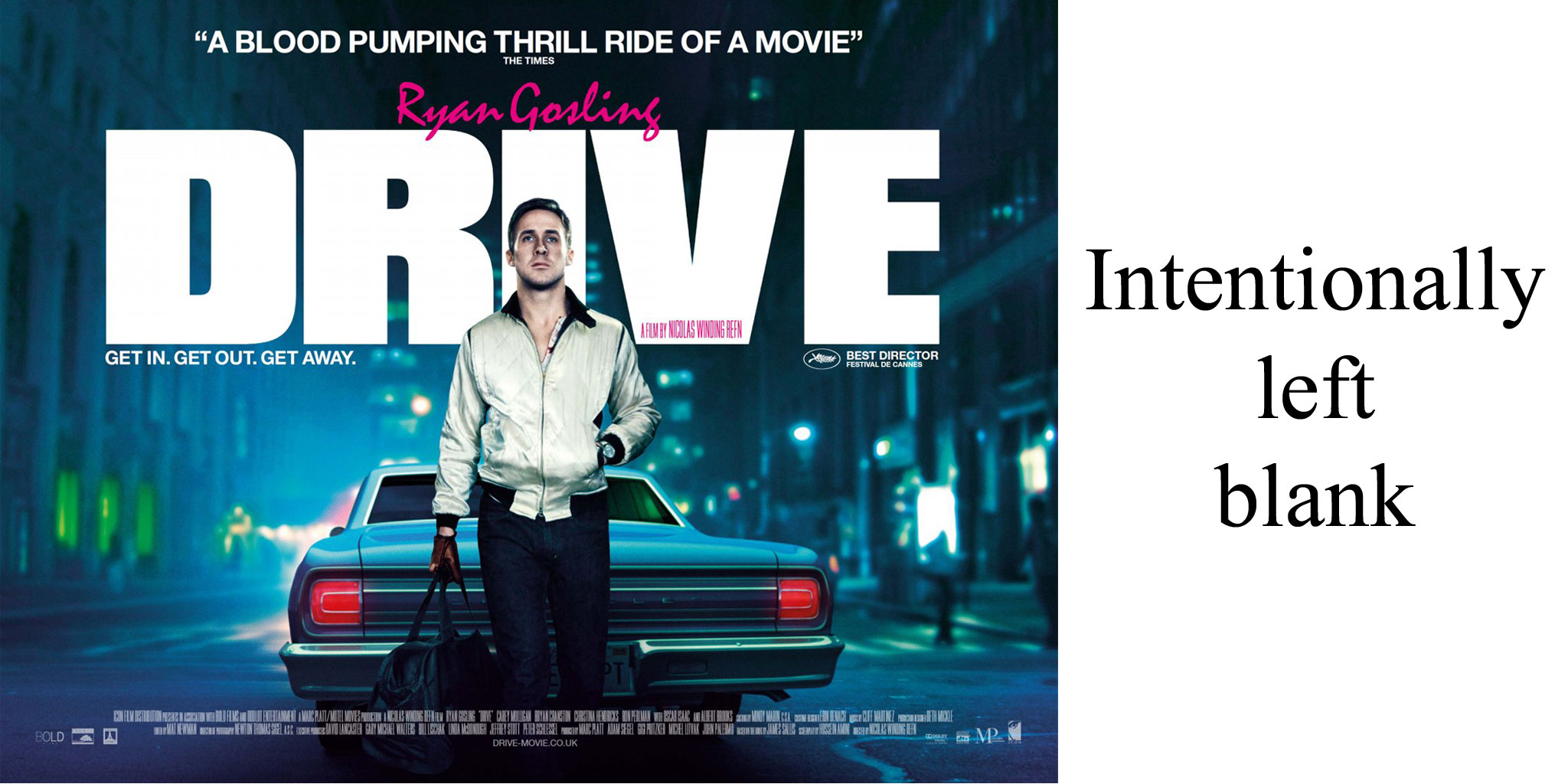Here’s some thought about one of my favourite movies of the last few years: «Drive» (which I am enjoying as I write).
I’ve always loved the movie, maybe even more every time I rewatch it. But I never really thought about the reasons why.
The things I registered up to now where that the overall mood of the film is somehow bright and dark at the same time, but in any case, very intriguing; The world of LA that is built seems sureal but inviting; the captivating pseudo-eighties soundtrack is great; and the colorful characters are interestingly written and even better executed by Cranston, Mulligan, Brooks, Hendricks, Perlman and Isaac (which I didn’t even remember was in that one).
But wait,… all the characters? …Of course not.
The main character, the nameless driver played by Ryan Gosling remains stoic, unapproachable even, unmoved by the occurances around him, may it be a heist, a car-stunt or some good ol’ boot heel kicking the shit out of a man’s skull.
Of course the internet has some opinions about this characterization: Some stated that he might be an autist or some kind of psychopath, (which he probably, surely is).
But though that might be an suitable character-trait (or better: the absence of such), I think the creators of «Drive» may had a different goal in mind:
While the protagonist’s behaviour could (and would) be interpreted as just awesome, unshakeable coolness, which is surely a trait that a male thirty-something viewer gladly can and will identify with, there might’ve been a difference plan at play.
Maybe it’s not so much a coolness but the mentioned absence of character that makes this movie so darn good. Instead of developing a «real» person the audience hopefully can identify with, the creators might intended to try out a different route: The video game approach.
Making the playable character in games often mute, sometimes faceless or having a customizable appeareance to mirror the player’s personality (or their wishes and fantasies) helps the player to project himself onto (into?) the main character.
This interpretation of «Drive» is probably old news, but it just got to me now:
«Drive»’s main character might have been left blank intentionally, for the viewer to fill in and by doing so, getting a more immersive viewing experience. (And Ryan Gosling’s looks surely help to make this projection even more inviting.)
So there you go. Probably not my best article, surely not written in my best english, and lacking some kind of arc. But «Drive» is still a hell of a great movie, nonetheless. If you haven’t watched it yet. Whattaruwaitingfoor?!!!
Post scriptum:
Watching the third act, I just realized that this movie is even more cleverer (yes, I just wrote that) than I thought (and I probably missed the whole point of it up until now):
In the final act, the whole no-character theme is taken to the next level when the driver puts on an almost life-like latex mask to hide his personality (even more) while doing some nasty deeds. Adding the given elevating soundtrack in this scene to the mix, it seems like the Driver all but reaches a state of complete absence of identity and personality, finally achieving some sort of climax of his evolution, becoming some kind of Über-mensch (no Nazi-relations intended, but some transportation business ones are).
The soundtrack underlying the last scene («real human being») seems to support the theory that the movie tries to make a point that the protagonist only finds his own humanity after he’s shed all his earthly individual traits and characteristics.

